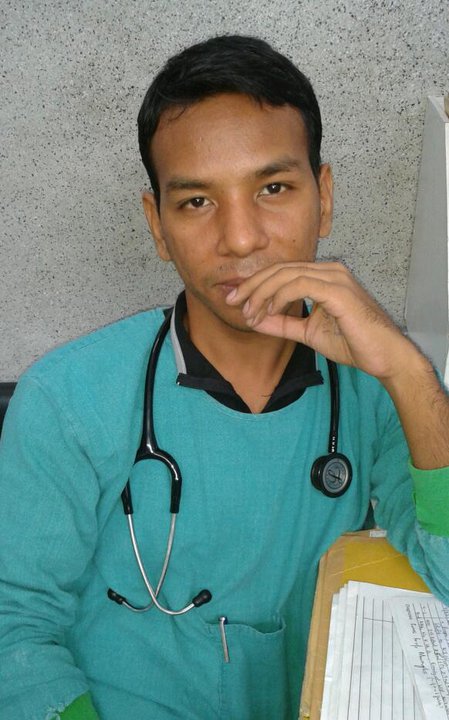Attitude change in a young doctor- Interview by Smriti Thapa
 Dr. Alok Pradhan is a young, talented doctor from eastern part of Nepal. He is currently serving as junior resident in the department of General Practice and Emergency Medicine, BPKIHS, Dharan, Nepal. As part of junior residency, he is posted in various health facilities and faculties including a rural posting in Obstetrics and Gynecology, where he also provides safe abortion services.
Dr. Alok Pradhan is a young, talented doctor from eastern part of Nepal. He is currently serving as junior resident in the department of General Practice and Emergency Medicine, BPKIHS, Dharan, Nepal. As part of junior residency, he is posted in various health facilities and faculties including a rural posting in Obstetrics and Gynecology, where he also provides safe abortion services.
He was selected as a participant of our first sensitization program under the project “Safe abortion through Gender Lens”, a small grant project funded by Asia safe abortion Partnership and coordinated by Ms. Smriti Thapa and Ms. Anu Thapa. His participation in the workshop was interactive and amazing. After few months of the sensitization program, we followed him and asked few questions regarding his experience and the program. Here is what he has to share with us:
How did you find the program?
To be honest, I should say it was an attitude changing experience. Prior to this program, I never saw abortion through gender lens. I just took abortion service as medical procedure. It was not that I neglected client’s right. However, this program helped me realize that patients seeking abortion are not just other patients, there are a lot of psychosocial and gender issues associated with abortion. During our clinical practice we usually ignore that part. Meanwhile, with this one day program I can find so much of change within myself while taking care of client who seeks abortion. Let’s put this in a simple way. I can better empathize and communicate with these clients now which have helped me to be a better service provider. Besides changes on me, the overall program was so well managed and interactive that we were able to grab the subtle nuances. I particularly liked the video which depicted real picture of my country where access to health care is still a major problem including that for abortion services.
Can you share us your clinical experience post sensitization program?
Recently I was posted in periphery, rural eastern part of Nepal. The clients receiving abortion are females who have a very limited position and power in the family. They come from different sociocultural background and have different perceptions regarding abortion, including termination practices. Particularly in terai region, sex selective abortion is popular due to dowry practices and other religious importance of male child. This makes us difficult as provider because sex selective abortion is against the law and makes us extra cautious turning us to judgmental provider at times. It is painful to learn that the decision making is done by the family not including the mother who carries the baby and who has to go through the mental and physical trauma. Surprisingly we still find some cases of septic abortion as even though legalized women in the periphery still don’t have that knowledge of legalization. So, working in periphery and central hospital is entirely different. But this program has shaped me in a way that I can now better understand my client and in turn provide better service to them. It has not only helped in providing better abortions services but other health services as well.
What are the barriers in providing abortion services?
One of the major barriers in my view is abortion stigma, not only within the community but also in medical profession itself. Stigma arises due to lack of understanding of gender and power balance. We still live in patriarchal society and it’s because women are only the sufferer it is more stigmatized. Clients are often labeled as irresponsible and immoral. Providers also at times get biased and judgmental while providing care as they are the product of this same patriarchal society. The gap in client care is due to gap in curriculum of medical studies that never teaches us to see abortion services through gender lens. Apart from this lack of knowledge of legalization among public, geographical barriers and economic barriers are hindering providers from providing better abortion services in Nepal.
What do you want to suggest to other young providers?
Younger providers should be sensitized like us. It’s not that we don’t study client right but that is not enough when we are addressing women’s health. It is important to understand how societal structure affects women’s health largely and being a medical provider we can only create better service if we better understand our client. More than young providers, I also suggest the concerned department to revise our curriculum and incorporate a chapter on Gender and patriarchy, sexual and reproductive rights and many more. Young people, it’s us who should be the change that we seek in the society.
Thanks to the organizers Youth Champions Smriti Thapa and Anu Thapa and the Asia Safe Abortion Partnership for this program. I hope such program should be conducted more often and include more service providers in future.






